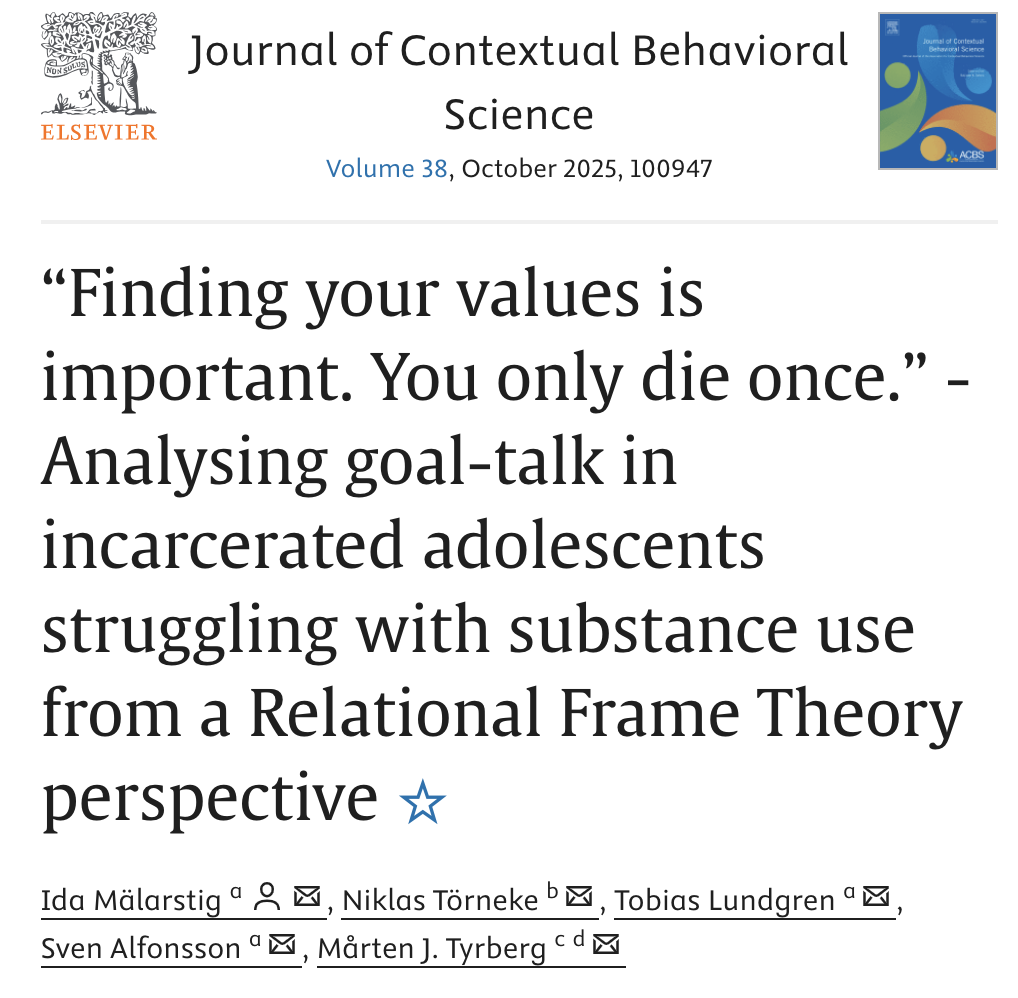Journal of Contextual Behavioral Science (JCBS)
Volume 38, October 2025
Authors
Ida Mälarstig, Niklas Törneke, Tobias Lundgren, Sven Alfonsson, & Mårten J. Tyrberg
Key Findings
- A coding manual based on Relational Frame Theory was developed to investigate verbal behaviour concerning goals in interviews with adolescents placed in institutional care.
- Results support feasibility of distinguishing goal-talk specifying appetitive and aversive consequences, along with a combined category.
- Goal-talk specifying appetitive consequences was positively associated with treatment outcomes.
- The concept of goal-talk provides insight into the process of how goals influence behaviour.
Abstract
Individually formulated goals are crucial in many therapeutic approaches, yet the underlying processes remain unclear. Relational Frame Theory (RFT) offers a framework for understanding language as a form of operant learning governed by contextual factors. For example, relating to a goal as superior influences the function of subordinate behaviours. The present feasibility study examined the concept of “goal-talk”, i.e., adolescents’ verbal behaviour surrounding goals, using data from interviews with twelve adolescents in compulsory institutional care who had undergone the Adolescent Community Reinforcement Approach (A-CRA). A coding manual was developed through deductive content analysis, and a preliminary exploratory analysis was conducted to examine associations between goal-talk, alignment with personal values, and behavioural change. Coding and analysing goal-talk from an RFT perspective proved feasible, and a higher frequency of goal-talk, particularly appetitive goal-talk, was associated with reductions in substance use and increased alignment with personal values. These findings provide preliminary support for the utility of goal-talk as a concept, but should be interpreted cautiously, given the small, homogeneous sample. Suggestions for further refinement of the coding manual and directions for future research are discussed.
